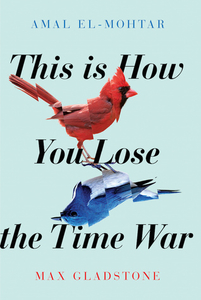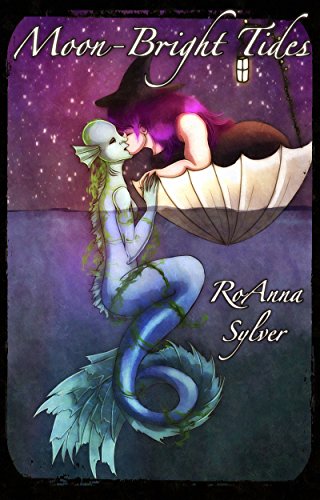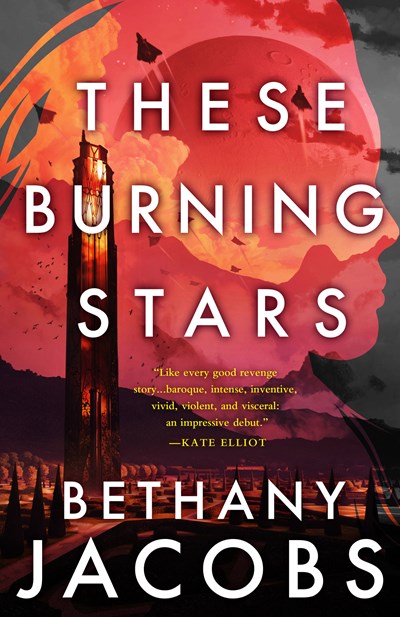Trigger warning: mentions of suicide
This novella was sold to me as “Virginia Woolf and Vita Sackville-West’s love letters, but in an enemies-to-lovers time travel agents au”. I’m not normally a big fan of SFF, but I couldn’t help but be intrigued by a pitch like that!
Red and Blue are operatives fighting on opposite sides of the time war. Both come from different post-human futures: Red is from a technologically-enhanced race (think androids) working for the Agency, and Blue from the environmentalist society (think wood elves) of Garden. Although they are non-human beings with seemingly different social constructions of gender, both use she/her pronouns.
The plot begins on a bloody battlefield. The agent Red discovers a handwritten letter marked ‘burn before reading’. What follows is a chain of coded correspondence as Red and Blue chase each other across parallel pasts and futures–different ‘threads’ of time which operatives manipulate with the aim of bringing about an eventual victory either for the Agency or Garden.
The novella is mostly told through these letters (although ‘letters’ is a loose word–messages can be hidden in anything, from the feathers on a goose to the flavour of a berry) as we see Red and Blue’s relationship develop. Are they falling in love? Are they playing one another to gain a tactical advantage? Where do their loyalties lie? What does ‘winning’ actually mean? And all the while, they are both being trailed by a mysterious Seeker.
There’s an obvious Romeo and Juliet influence going on, especially towards the end [Spoilers, highlight to read] when we get into the territory of apothecary poisons and fake-out suicides, but I can reassure you that in this case there’s a happy ending in sight. [End spoilers]
I think the Virginia/Vita comparison was also pretty apt. Red and Blue come from completely different cultures and have no fixed context (thanks to all the time travel). As Red writes in one letter, “Mrs. Leavitt suggests relying on metaphors one’s correspondent—that’s you, I think?—will find meaningful. I confess I don’t entirely know what’s meaningful to you.” This means they have to communicate in the abstract, in poetic language and high-fluted imagery. The resulting beautiful, lyrical prose style is one of my favourite aspects of the novella.
El-Mohtar and Gladstone do a great job of conveying the characters’ passionate emotions without it ever getting too sappy (although maybe it is a little pretentious here and there – if you’re not into purple prose this may not be one for you).
However, the abstract nature of the letters was also one of the things I found most frustrating. This may sound odd from someone who isn’t generally into SFF, but I found myself wishing there was a little more explanation of the mechanics of the world! In some ways I respect that the authors chose to focus more on the characters’ emotional journey rather than on the hard sci fi world-building–for example, I like their decision never to explain how the agents actually time travel–but at times I did find myself getting lost. I could have done with a few more concrete markers to help me follow the plot.
Even so, I did manage to enjoy the story a lot. The time loop shenanigans are great fun (although thinking too hard about them might result in some head-scratching over paradoxes) and the romance between Red and Blue is beautifully developed. And it’s always good to see diversity in SFF–a story with two queer female(ish) leads, one of whom is specified as having dark skin, is a welcome arrival.
I wouldn’t necessarily recommend this book to everyone, but if you enjoy poetic writing and don’t need to know all the world-building details to enjoy a sci-fi setting, then this may be for you! Plus who doesn’t love the red/blue trope in their gay romance?


